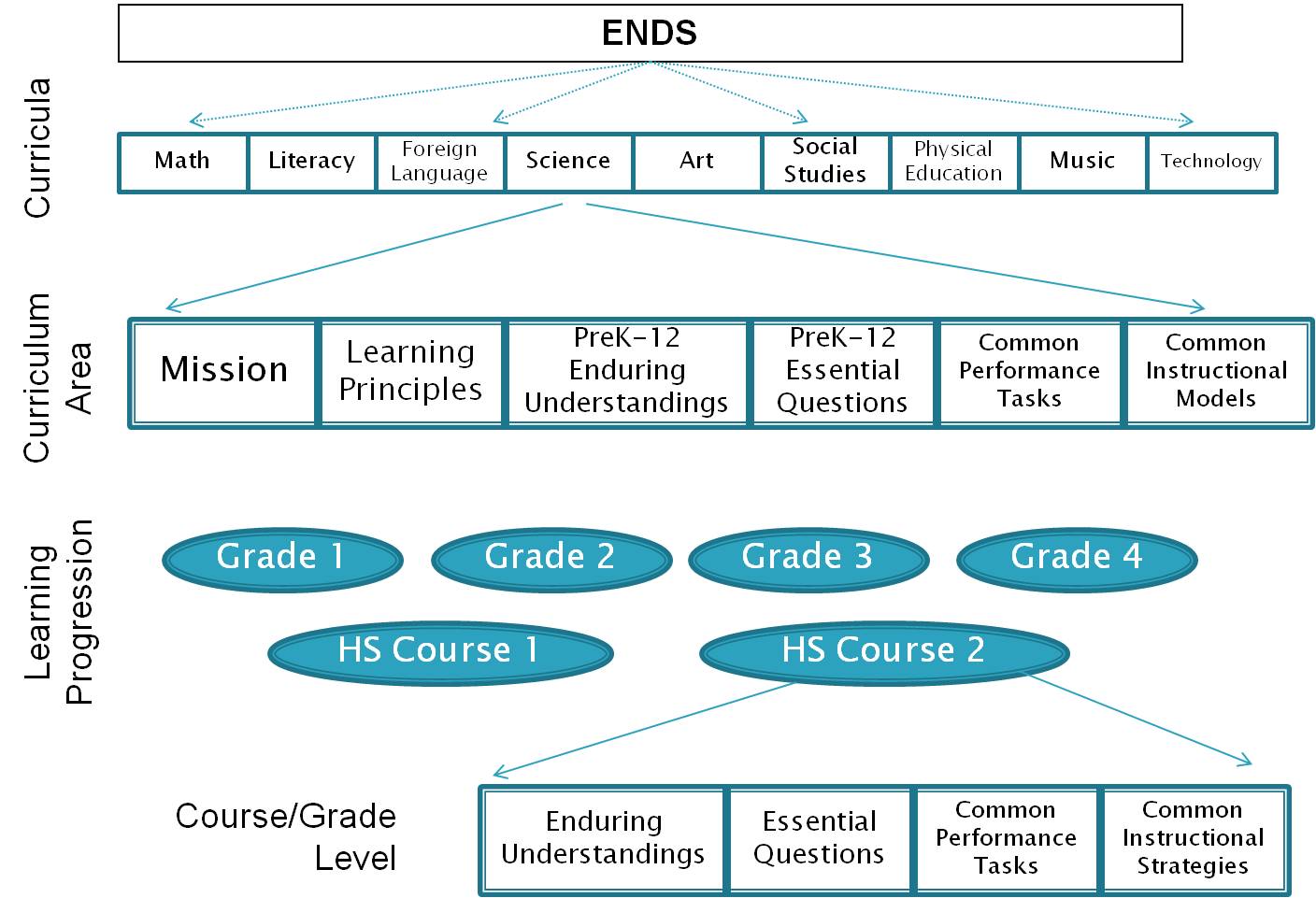Welcome to Orleans Southwest Curriculum Framework

Orleans Southwest has establish a strategic paln based on Jay McTyghe and Grant Wiggin's Schooling by Design Model and Jim and Miriam Carver Policy Governance model for organizations. These two models were used during the 2008 - 2009 school year to develop a plan and a model for the supervisory union. Our educational model is made up of eight components and a graphic can be seen to the right. The components of the house are:
- Policy Governance
- Learning Principles
- 21st Century Curriculum and Assessment Systems
- 21st Century Instructional Programs and Practices
- Resources - Financial, Personnel, Evaluation and Professional Development
- ENDs (Student Outcomes)
- Backwards Design
- Strategic Principles
To see a PowerPoint about the eight elements above please click here.
Within this plan, Orleans Southwest Supervisory Union's has developed a Curriculum Framework is made up of 10 elements from Schooling by Design that will help all of our students achieve the supervisory union ENDs. The revisions of our curricula is the focus of 7 curriculum committee. As we have learned from Robert Marzano's meta-analysis in What Works in Schools, we know that the development of a guaranteed and viable curriculum is the number one factor at the school level for student success. Please see our definition of a guaranteed and viable curriculum.

The ten elements of our curriculum documents are:
- Statements of Mission, and Learning Principles
- K-12 Overarching Enduring Understandings and Essential Question
- Learning Progressions and Grade Level Benchmarks
- Cornerstone Assessments
- Common Rubrics
- Anchor Papers
- Enabling Strategies and Differentiation Instruction
- Diagnostic and Formative Assessments
- Troubleshooting
- Monitoring and Evaluation
To see what parts of the curriculum are determined at the school level and the district level, take a look at the district's distribution of elements and who has responsible to complete them.

Our assessment model is based the alignment of assessments around Vermont's Grade Expectations and the Common Core from the multiple levels, state, district, school, and classroom. To the level is an example of our assessment literacy system, from the national level to the classroom level. While providing these multiple level of assessments we also need to use different forms of assessment, formative, summative, performance tasks, screening, diagnostic, and progress monitoring. Please see the glossary at the bottom of the page for definitions of these types of assessment.

Once these assessments are conducted, we use a Data Team process to analyse the results and see if we can triangulate the information to discover trends in the information on both an individual student, class and school level.

Our instructional model is based We are using a Response to Instruction model that requires that we first determine the curriculum for all students and then monitor how students are obtaining the curricula goals via each content area's learning progressions. Please look at OSSU definitions of the six components that were developed with Vermont's Department of Education. As we monitor each student, classroom and school we can determine the effectiveness of the instruction and meet the needs for each student.
Glossary of Terms
Depth of Knowledge Resources
Comments (0)
You don't have permission to comment on this page.